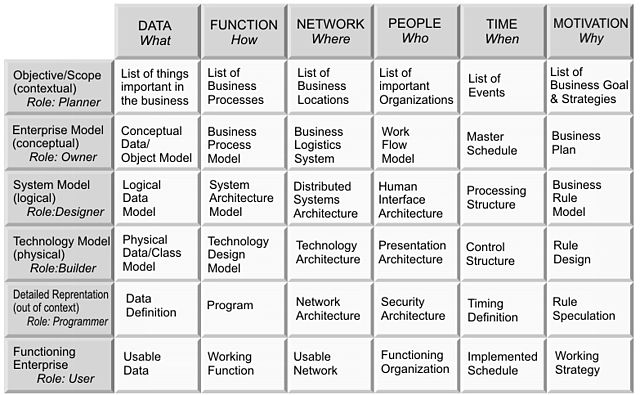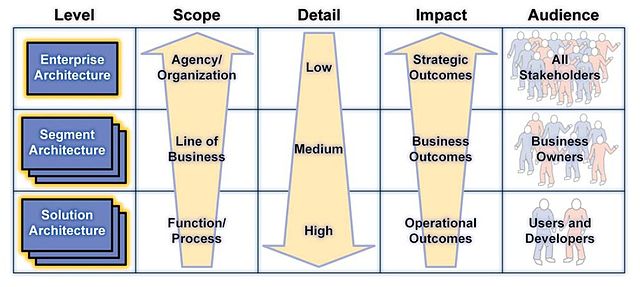The Zachman Framework is an enterprise ontology and is a fundamental structure for enterprise architecture which provides a formal and structured way of viewing and defining an enterprise. The ontology is a two dimensional classification schema that reflects the intersection between two historical classifications. The first are primitive interrogatives: What, How, When, Who, Where, and Why. The second is derived from the philosophical concept of reification, the transformation of an abstract idea into an instantiation. The Zachman Framework reification transformations are: identification, definition, representation, specification, configuration and instantiation.
The Zachman Framework of enterprise architecture
Collage of Zachman Frameworks as presented in several books on Enterprise Architecture from 1997 to 2005.
The original 1987 "Information Systems Architecture Framework".
Simple example of the 1992 Framework.
A view model or viewpoints framework in systems engineering, software engineering, and enterprise engineering is a framework which defines a coherent set of views to be used in the construction of a system architecture, software architecture, or enterprise architecture. A view is a representation of the whole system from the perspective of a related set of concerns.
Simplified illustration of the Zachman Framework with an explanation of the rows. The original framework is more advanced, see for an example here.
The RM-ODP view model, which provides five generic and complementary viewpoints on the system and its environment.
DoDAF linkages among views.
Federal Enterprise Architecture levels and attributes








